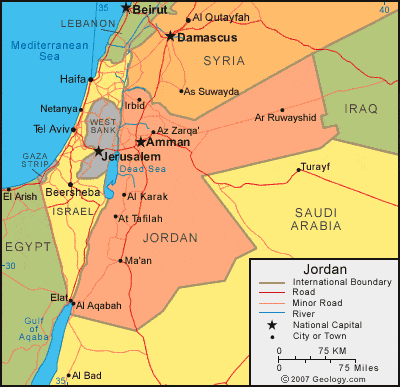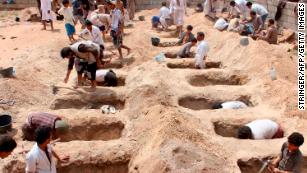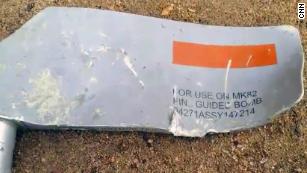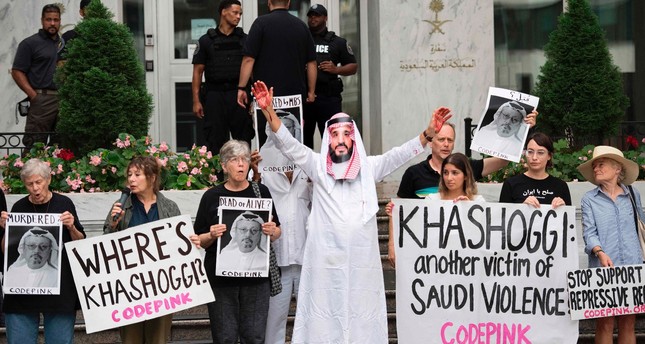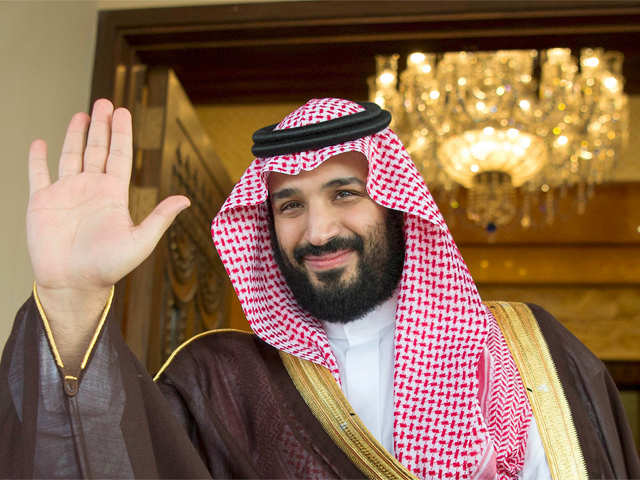 MARIB, Yemen (AP) — Farouk Baakar was on duty as a medic at al-Rashid hospital the day a bleeding man was brought into the emergency room with gunshot wounds and signs of torture. He’d been whipped across the back and hung by his wrists for days.
MARIB, Yemen (AP) — Farouk Baakar was on duty as a medic at al-Rashid hospital the day a bleeding man was brought into the emergency room with gunshot wounds and signs of torture. He’d been whipped across the back and hung by his wrists for days.
The patient, Baakar learned, had been left for dead by the side of a highway after being held captive in a prison run by the Houthi rebels who control northern Yemen.
Baakar spent hours removing bullets and repairing ruptured intestine. He tended to the patient’s recovery for 80 days and, at the end, agreed to pose for a selfie with him.
Weeks later, Houthi security officials grabbed the man again. They searched his phone and found the photo.
Then they came for Baakar.
Militiamen stormed the hospital, blindfolded Baakar and hustled him away in a pickup truck. Because he’d given medical help to an enemy of the Houthis, they told him, he was now their enemy too. He spent 18 months in prisons within the expanse of Yemen controlled by the Houthis. He says they burned him, beat him and chained him to the ceiling by his wrists for 50 days until they thought he was dead.
Baakar and his patient are among thousands of people who have been imprisoned by the Houthi militia during the four years of Yemen’s grinding civil war. Many of them, an Associated Press investigation has found, have suffered extreme torture — being smashed in their faces with batons, hung from chains by their wrists or genitals for weeks at a time, and scorched with acid.

This July 25, 2018 photo shows a mobile picture of Monir al-Sharqi, after he was burned by acid, at the Marib General Hospital in Yemen. (AP Photo/Nariman El-Mofty)
The AP spoke with 23 people who said they survived or witnessed torture in Houthi detention sites, as well as with eight relatives of detainees, five lawyers and rights activists, and three security officers involved in prisoner swaps who said they saw marks of torture on inmates.
These accounts underscore the significance of a prisoner-swap agreement reached Thursday at the start of United Nations-sponsored peace talks in Sweden between the Houthi rebels and the Yemeni government backed by Saudi Arabia and the United States.
As a confidence-building measure, the two sides agreed to release thousands of prisoners, though details must still be hammered out. But while the coalition side would release captured Houthi fighters, the rebels would largely free civilians who, like Baakar, were imprisoned in brutal sweeps aimed at suppressing opposition and obtaining captives who could be traded for ransom or exchanged for Houthi fighters held by the other side.

The mother, right, and wife of of a Yemeni detainee who has been held for months in Houthi prison. (AP Photo/Nariman El-Mofty)
The Abductees’ Mothers Union, an association of female relatives of detainees jailed by the Houthis, has documented more than 18,000 detainees in the last four years, including 1,000 cases of torture in a network of secret prisons, according to Sabah Mohammed, a representative of the group in the city of Marib.
The mothers’ group says at least 126 prisoners have died from torture since the Houthis took over the capital, Sanaa, in late 2014.
Mosques, ancient castles, colleges, clubs and other civilian structures have served as first-stop facilities for thousands of detainees before they are moved into official prisons, according to testimonies of victims and human rights agencies. The mother’s group counted 30 so-called black sites in Sanaa alone.

Monir al-Sharqi walks to his bed after nurses changed the dressings on his burns, at the Marib General Hospital. (AP Photo/Nariman El-Mofty)
Houthi leaders previously have denied that they engage in torture, though they did not respond to repeated AP requests for comment in recent weeks.
The Houthis’ Human Rights Ministry said in a statement in late 2016 that “there is no policy or systematic use of torture on prisoners.” It added that the ministry and prosecutors are working to “ensure the rights of prisoners and provide all legal guarantees to achieve justice and fair trials.”
Amnesty International says that “horrific human rights abuses, as well as war crimes, are being committed throughout the country by all parties to the conflict.”
But international outrage over the bloodshed in Yemen has largely focused on abuses carried out by the U.S.-backed and Saudi-led military coalition fighting on the side of the Yemeni government. The AP has exposed torture at secret prisons run by the UAE and their Yemeni allies and has documented the deaths of civilians from strikes by drones in the United States’ campaign against al-Qaida’s branch in Yemen.
A look at the Houthis, the Yemeni rebel movement. (AP Animation/Peter Hamlin)
Abuses by the Houthis have been less visible to the outside world as the rebels worked to eliminate dissent and silence journalists.
From the capital, Sanaa, the Houthis rule over around 70 percent of Yemen’s 29 million people. The Houthis believe they are the descendants of the Prophet Muhammad and, as such, have a divine right to rule Yemen. Those who oppose them are “God’s enemies,” worthy of punishment.
One of the former prisoners of the Houthis who spoke to the AP was a school teacher from the northern city of Dhamar who, after his release, fled to Marib, which is under control of the Houthis’ opponents. He asked that he be identified only by his first name, Hussein, because he fears for the safety of family members still in rebel territory.
He was held for four months and 22 days in an underground cell. He was blindfolded the entire time, he said, but kept count of the days by following the Muslim calls to prayer. Throughout his confinement, he said, his jailers beat him with iron rods and told him he was going to die.
“Prepare your will,” he said they told him.

Yemeni medic Farouk Baakar demonstrates how he was tortured in a prison run by Yemen’s Houthi rebels. (AP Photo/Nariman El-Mofty)
___
‘CRY TEARS OF BLOOD’
The Houthis began in the 1990s as a Shiite revivalist religious movement. The group turned into an armed militia in 2004, when the military under then-President Ali Abdullah Saleh killed their founder, the brother of the current leader, Abdel-Malek al-Houthi.
Saleh fought the Houthi insurgency for six years, with thousands killed on both sides before reaching a cease-fire just months ahead of the 2011 Arab Spring uprising that put an end to his rule.

This 24-year-old student was imprisoned for months by the Houthis, during which he said he was beaten and hung from a ceiling by his handcuffed wrists. (AP Photo/Nariman El-Mofty)
Less than three years later, the Houthis joined ranks with Saleh in an alliance of convenience — the former autocrat saw a possible route back to power, while the rebels gained backing from the army units still loyal to him. Together, they occupied most of northern and western Yemen, driving out Saleh’s successor, Abed Rabbo Mansour Hadi.
In response, the U.S.-backed coalition launched its campaign to restore Hadi’s internationally recognized government and thwart what Saudi Arabia and the United Arab Emirates claim is an attempt by Iran, the Houthis’ ally, to take over.
The Houthis have sought to entrench their rule by cracking down on a wide range of perceived enemies — young activists, religious minorities, socialists and others who might oppose Houthi rule.
But there are divisions within the movement.
Internally, a moderate faction of Houthi leaders acknowledged abuses and sought to put an end to them. The leader’s brother, Yahia al-Houthi, set up a committee in 2016 to investigate reports of torture and indefinite detentions, and helped free 13,500 prisoners in its first three months.
The committee sent a video report to the leader, Abdel-Malek, showing scenes of overcrowded prison wards and prisoners with bruises, along with testimony from senior Houthi figures.
Abdel-Malek never responded. Instead, hard-line security officials shut down the committee and briefly detained two of its members.
The video was not made public, but the AP obtained a copy, and it contains startling admissions from prominent Houthi figures about abuses.
“What we saw would make you cry tears of blood,” one committee member says.
___
‘HELP ME’
The first few months in Houthi detention sites are usually the worst, ex-inmates say, as the militants improvise and inflict their torture.
Anas al-Sarrari recalls slowly regaining consciousness in a dark corridor in the Sanaa’s Political Security prison. The 26-year-old critic of Houthi brutality held his head between his swollen hands and bruised wrists, as flashes of two months of torture raced through his mind.

Anas al-Sarrari sits in his wheelchair in his home in Marib. (AP Photo/Nariman El-Mofty)
He was eating grilled corn when masked militiamen snatched him from a main street in Sanaa one morning in September 2015.
He remembered hanging for 23 hours by his handcuffed wrists from the ceiling of a stuffy interrogation room as numbness claimed his fingers, arms and much of his body. The cuffs began to slit his wrists and he tried to rest on his toes.
“Death must be less painful than this nonstop torture,” he recalled thinking at the time. “One more hour like this and I will die.”
His jailers unchained him from the ceiling for a couple hours each day, when he was given hard bread and a plate of vegetables and dirty rice crawling with cockroaches. When they gave him yogurt, he was able to see the date written on the container and mark the passage of time.
“My mother doesn’t even know if I am alive or dead,” he thought.
He remembered seeing a torturer with a stun gun staring at his head before dealing a blow with all his might. Al-Sarrari collapsed.
He doesn’t know how long it took for the Houthi militiamen to untie him from the ceiling and then dump him in the corridor. He tried to stand but couldn’t pull his body together. “Maybe I am in heaven?” he remembers thinking. “Maybe it’s a bad dream?”
At daylight, he tried again to move, but failed. “Help me,” he screamed. Militiamen dragged him into a cell. Only then did he realize he was paralyzed. He had no one to talk to, no one to take him to the bathroom. He urinated and defecated like a newborn baby.
Guards sometimes took him out to wash and returned him to the filthy cell, where he banged his head on the wall in desperation. After four months, they cleaned him up and released him.

Anas al-Sarrari sits in his wheelchair during a power cut in his home in Marib. (AP Photo/Nariman El-Mofty)
Al-Sarrari showed AP copies of his medical records. He now uses a wheelchair and believes that the purpose of his torture and release was to send a message to others who might want to criticize the Houthis.
“To see people with disabilities, coming out of prison after excessive torture will terrify everyone: Look, this will happen to you if you speak up,” he said.
___
‘PRESSURE ROOM’
The selfie of Baakar with an escaped prisoner was all the evidence seven Houthi militiamen needed of the medic’s disloyalty when they came for him at al-Rashid hospital.
“How much money did they give you to treat the enemies?” one militiaman screamed in his face.
Baakar says they slapped and kicked him, beat him with batons on his face, teeth and body, and taunted him: “You will be killed because you are a traitor.” The militiamen took him to a location he couldn’t identify, stood him on a wooden box, chained his wrists to the ceiling and then kicked the box out from under his feet.
He says they stripped him and whipped his naked body, then pulled out his nails and tore out his hair. He fainted.
“It was so painful, especially when they come the next days and press on the bruises with their fingers,” he said.
The Houthis became more and more creative, Baakar said. They once brought plastic bottles and with a lighter melted the plastic over his head, back, and between his thighs.
Eventually, Baakar was taken to Hodeida castle, the 500-year-old Ottoman-era fortress on the Red Sea coast. He says guards pushed him into a filthy basement known as the “Pressure Room” and hung him by his wrists. In a dark corner, he could see shapes of dead cats and even torn fingers.
When he grew thirsty, he said, torturers splashed water on his face and he licked off the drops. At times, they would let other prisoners enter his cell and give him water from a bottle.
On the day guards thought Baakar had died, then realized he was still alive, they untied him and allowed two prisoners to feed and clean him.
As Baakar began to recover from his wounds, other detainees who had been tortured began asking for his help. He tried to heal the injured. He carried out simple surgeries, without anesthesia, using electric wires, the only tool he had in prison.
Sometimes the guards allowed him to go about his medical work. Other times, he says, they turned on him and punished him for helping his fellow prisoners.
Baakar recalled helping a man who’d been hung by his penis and testes and was unable to urinate. Another man with a white beard and white hair had been badly burned when the Houthis poured acid on his back, melting his skin and nearly sealing his buttocks. Baakar used wires to make an opening and, with his fingers, removed the stool.
“When I asked Houthi guards for help, saying the man is dying, their only answer was: ‘Let him die’,” Baakar said.
The Houthis released Baakar on Dec. 3, 2017 after his family paid 5.5 million rials, about $8,000 at the time.
Soon after he fled to Marib, the anti-Houthi stronghold. He lives in a tent with other refugees, where he continues to treat the sick and wounded.
___
The AP’s reporting on the war in Yemen is supported by a grant from the Pulitzer Center on Crisis Reporting.



